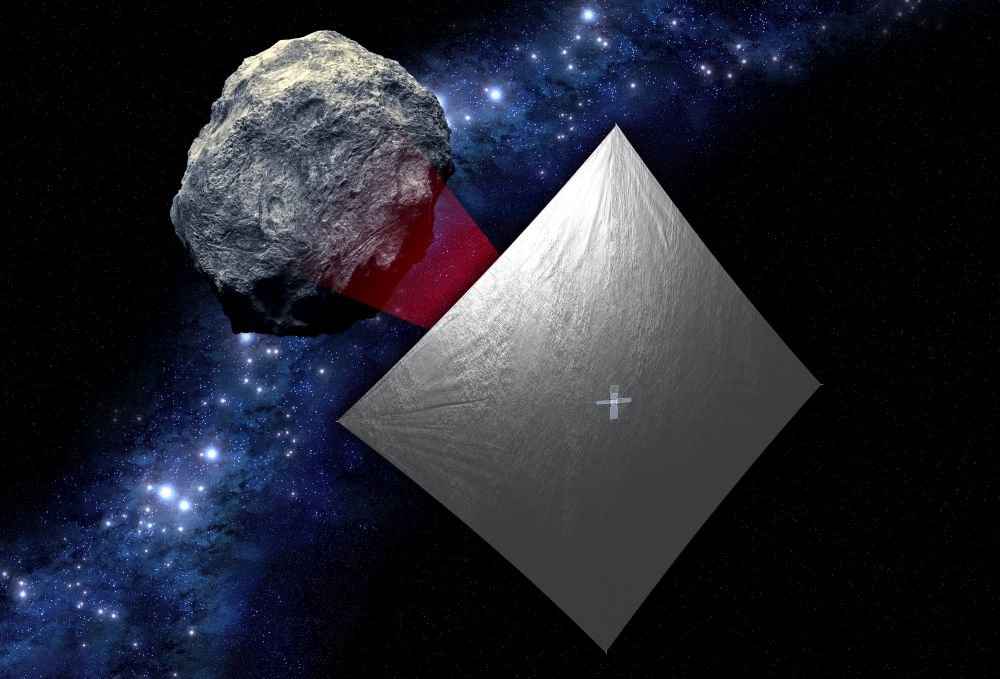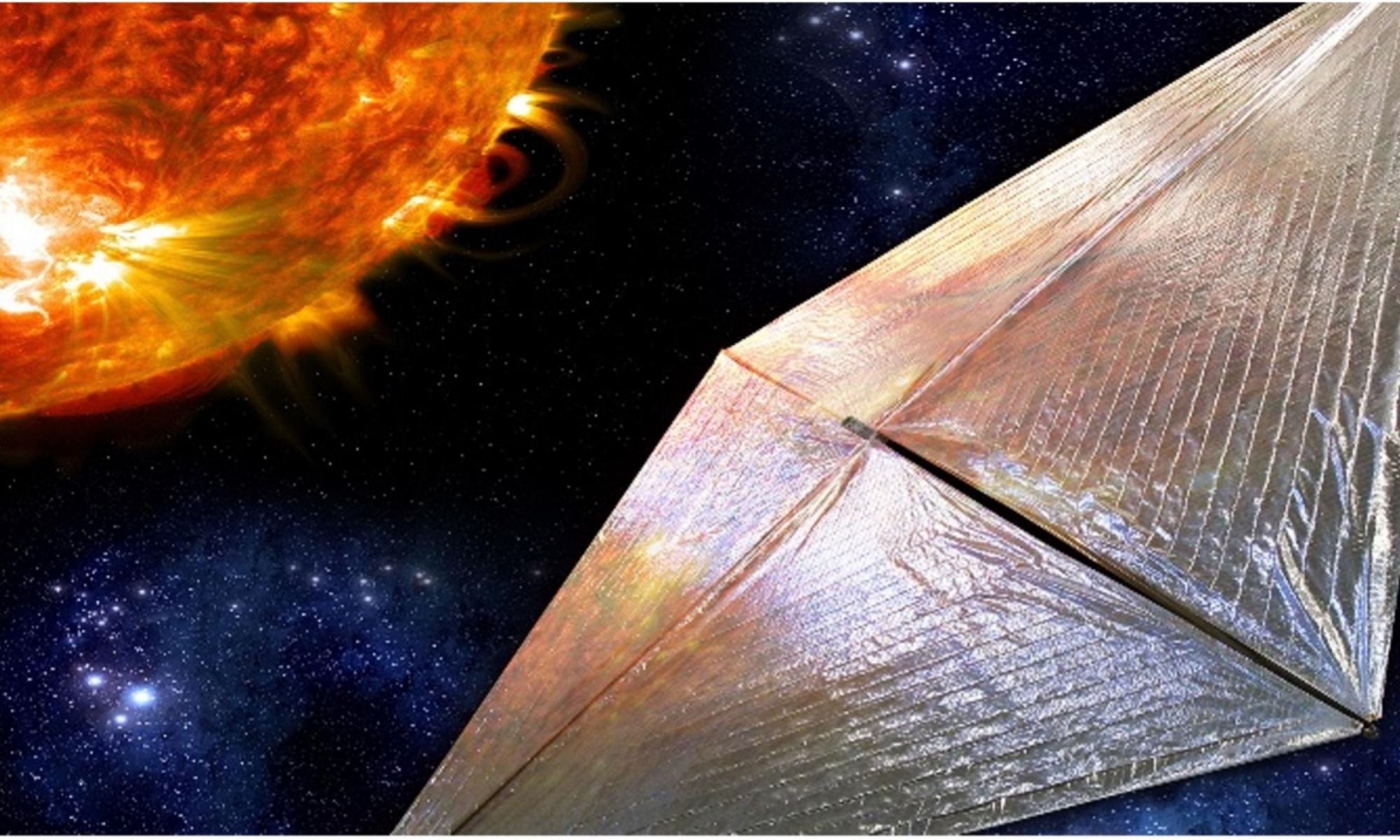A team led by NASA’s Marshall Space Flight Center (MSFC) was recently selected to develop a solar sail spacecraft that would launch sometime in 2025. Known as the Solar Cruiser, this mission of opportunity measures 1653 m2 (~17790 ft2) in area and is about the same thickness as a human hair. Sponsored by the Science Mission Directorate’s (SMD) Heliophysics Division, this technology demonstrator will integrate several new solar sail technologies developed by various organizations to mature solar sail technology for future missions.
In a recent video released by NASA, we see engineers and industry partners at the MSFC in Huntsville, Alabama, unfurling a segment of the prototype solar sail. The video, taken on October 13th, shows how the teams used two 30.5 m (100-foot) lightweight composite booms to unfurl a 400 m2 (4,300 ft2) quadrant of the solar sail prototype for the first time. Once realized, the Solar Cruiser demonstrator will validate technologies that enable future missions to study the Sun, its interaction with Earth, and its extended atmosphere (aka. heliosphere).
The Solar Cruiser team includes industry partners like spacecraft and payload developer Ball Aerospace, critical systems manufacturer Roccor, LLC, and subcontractor NeXolve, which specializes in producing thin, lightweight materials and structures (such as solar sail films). Alongside NASA Marshall, they are leveraging advancements in solar sail technology from the past decade, including elements from previous missions. These include:
- NASA’s NanoSail-D mission
- JAXA’s Interplanetary Kite-craft Accelerated by Radiation Of the Sun (IKAROS) mission
- The Planetary Society’s LightSail missions
- NASA’s Near-Earth Asteroid (NEA) Scout mission
The video features NASA scientists Les Johnson, the Principle Investigator of the NEO Scout mission, which launched with Artemis I (one of ten secondary payloads). As he explained, the purpose of this unfurling was to test how the sail would deploy once it was in space:
“The sail deployment test that we just completed here at NASA Marshall was really a test of [the] functionality of the sail. Could you get these two hundred-foot-long booms coiled up, put in a deployer, attached to a sail that has an area of over four thousand square feet when it’s all folded and rolled, put it in a small box, and get it to deploy unaided? And the answer is yes. We had a very successful test, and the results are evident in the pictures that have been taken and the data we collected during the test.”
Solar sails rely on lightweight highly-reflective material and continuous photon pressure from the Sun’s rays (solar wind) to generate thrust. This does away with the need for propellant that makes up most of a mission’s pre-flight mass or the heavy electric propulsion systems that power Hall-Effect Thrusters (ion engines). In addition to increasing a mission’s mass, they also limit its lifetime and observation locations. This is the purpose of the Solar Cruiser, which will demonstrate a solar sail’s ability to make observations from a sunward-facing position at L1.
The design also includes four 29.5-m (~97-ft) lightweight booms, similar to the metallic Triangular, Rollable and Compressible (TRAC™) booms used by the NEA Scout mission. Designed by the U.S. Air Force and licensed to Roccor, LLC, these booms are similar to those used by the James Webb Space Telescope (JWST) to deploy its Sunshield. For the sake of the Solar Cruiser, Roccor developed TRAC booms using lighter composite materials via NASA’s Small Business Innovation Research (SBIR) program.
The sail also has embedded Reflective Control Devices (RCDs) that provide propellantless attitude control and help keep the sail stable. The sail membrane consists of a thin-film polyimide successfully flown on NanoSail-D coated with aluminum to make it reflective. This material was selected because of its flight-proven properties and how it is scalable to sails of any size – from the 10 m2 (~33 ft2) sail on NanoSail-D to sails greater than 10,000 m2 (~32,800 ft2). This is consistent with one of the main objectives of the Solar Cruiser, which is the ability to build sails of increasing size.
“The key to enabling some of these missions is having larger and larger sails that are very lightweight,” he said. “And that’s why we’re moving from sails the size of NEA Scout, nine-hundred and twenty-five square feet, to seventeen-thousand eight-hundred square feet. And in the future, we will make sails that are even larger still. And the larger the sail, generally speaking, the better it has a capability to do propulsion and higher thrust.”
The study of heliophysics is vital to the National Oceanic and Atmospheric Administration (NOAA) and the Department of Defense. These government organizations are responsible for issuing alerts for space weather alerts and forecasts and monitoring things like solar flares that cause interference with communications or satellites. The Solar Cruiser will also demonstrate the capability to make sustained in-situ measurements of Earth’s magnetotail – the interaction between Earth’s magnetosphere and solar wind.

Monitoring solar activity and space weather is also of interest to NASA’s human exploration programs. Before this decade is over, the Artemis Program will send astronauts to the Moon for the first time in over fifty years. The long-term aim of Artemis is to create a “sustained program of lunar exploration” that will include the creation of infrastructure and long-duration stays on the lunar surface. By the 2030s, NASA plans to send crewed missions to Mars that will consist of a six to nine-month transit and science operations on the Martian surface.
Knowing how to predict solar events will ensure astronaut health and safety and that their equipment remains operational. Just another exciting field of study that NASA and other space agencies will pursue in the coming years. And it’s fair to say that these efforts will enable new missions to expand our understanding of the Solar System and the Universe.
Further Reading: NASA


The use of solar sails begs the question: Will spacecraft using solar sails be capable of “tacking” against the solar wind?